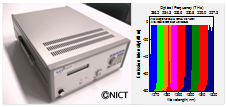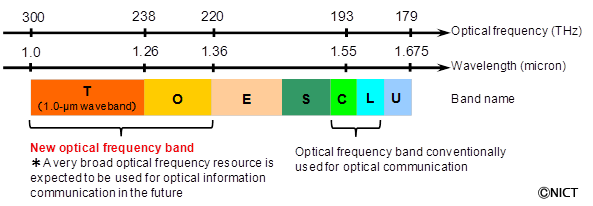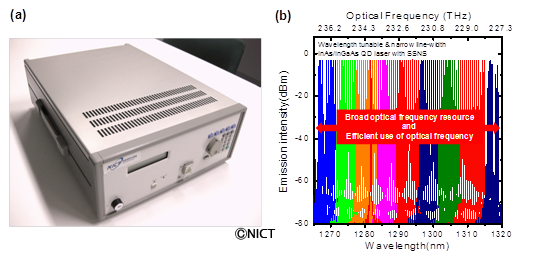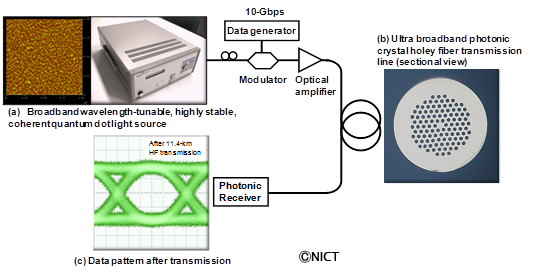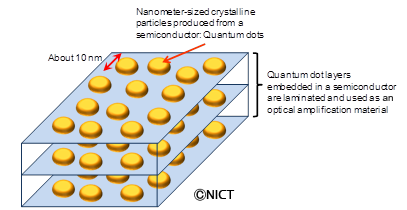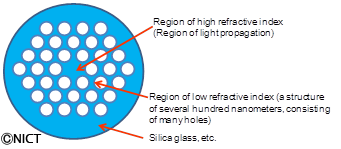The current optical fiber communication systems use a 1.55-micron wavelength band of about 10 THz, where the attenuation of the optical signal and distortion of data are quite low (See Fig. 1). Although research and development for an efficient use of the optical signal in this wavelength band has been in progress, these measures alone are not sufficient for bringing the ultra-high-speed and the large-capacity optical communication in the future into reality, due to lack of frequency resources.
For this reason, NICT has engaged in a basic technology research related to development and efficient use of optical frequency resources by employing photonics-based technology for an effective utilization of the optical frequency band in the broadband region, where it is difficult to use for transmission or for generation of light (See Fig.1). Therefore no other research and development has been carried out so far.







